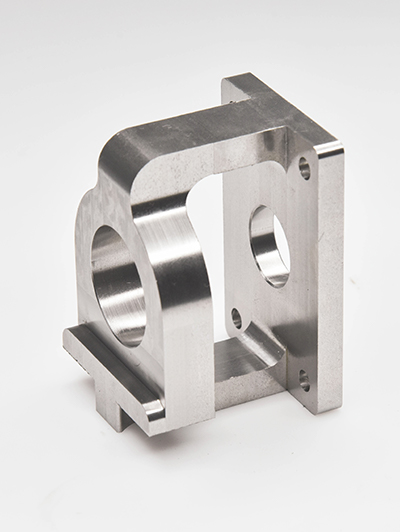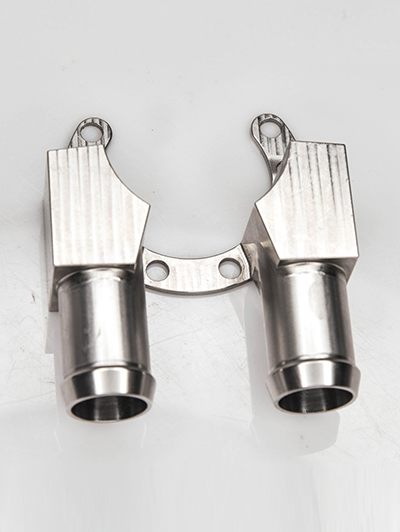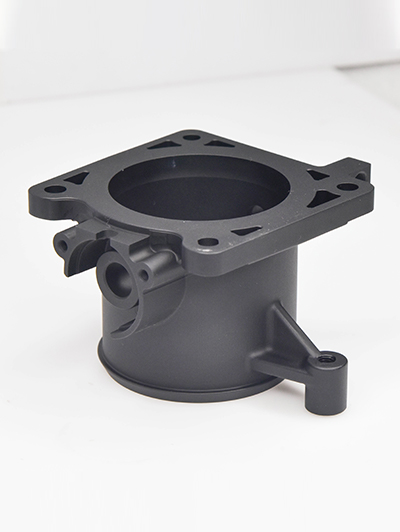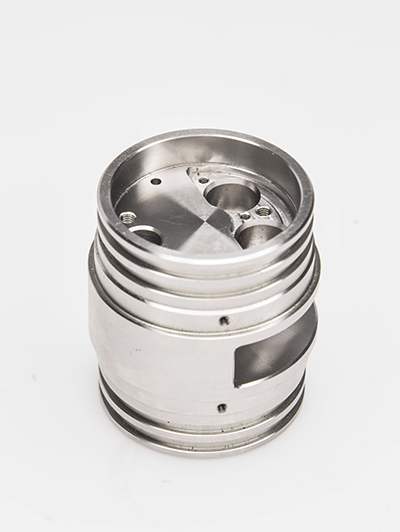Information
AI-Powered Machining | Intelligent Parameter Optimization_ 20% Efficiency Gain, 15% Cost Reduction
AI-Powered Machining: Intelligent Parameter Optimization for 20% Efficiency Gain and 15% Cost Reduction
In today’s competitive manufacturing landscape, precision and efficiency are crucial for maintaining a strong position in the market. As industries continue to evolve, the demand for high-quality, cost-effective, and quick-turnaround production increases. That's where AI-powered machining comes into play. By integrating artificial intelligence (AI) into the manufacturing process, businesses can achieve remarkable improvements in both efficiency and cost reduction. This advanced technology enables intelligent parameter optimization, resulting in a 20% efficiency gain and a 15% cost reduction. Let’s explore how AI-powered machining is transforming industries and shaping the future of precision manufacturing.
What is AI-Powered Machining?
AI-powered machining refers to the integration of artificial intelligence and machine learning algorithms into traditional machining processes. This combination allows machines to autonomously adjust and optimize the parameters used during the production process, ensuring maximum precision and efficiency. The primary goal of AI in machining is to reduce human error, enhance the adaptability of machines, and automate repetitive tasks.
By leveraging data-driven insights, AI can analyze vast amounts of data from sensors, machines, and previous production runs to predict the best settings for a specific task. This real-time optimization ensures that the machining process is always operating at peak efficiency while minimizing resource wastage.
How Does AI Optimize Machining Parameters?
Machining processes like CNC turning, milling, grinding, and EDM (Electrical Discharge Machining) require precise control over variables like speed, feed rates, tool selection, and cutting depth. These factors heavily influence the quality of the finished product, as well as the efficiency and cost of the process.
AI systems can analyze historical production data and real-time input from the machine to identify optimal parameters for each job. These systems continuously adapt and fine-tune the parameters based on changing conditions, such as material properties or tool wear, ensuring optimal performance. Additionally, AI-powered systems can predict maintenance needs and alert operators before any issues arise, further enhancing productivity and reducing downtime.
Key Benefits of AI-Powered Machining
Efficiency Gains AI’s ability to optimize machining parameters can lead to significant efficiency improvements. By adjusting variables in real time, machines can work at their optimal performance levels, reducing cycle times and boosting throughput. In fact, manufacturers using AI-powered machining can expect up to a 20% gain in efficiency.
Whether it’s through optimizing tool paths for CNC machines or adjusting spindle speeds in milling machines, AI ensures that resources are used effectively. This reduction in time and waste translates directly into higher output, which is crucial in a fast-paced production environment.
Cost Reduction One of the most compelling advantages of AI-powered machining is its ability to reduce costs. AI not only increases efficiency but also minimizes material waste, energy consumption, and machine wear. By optimizing cutting parameters and predicting potential issues, manufacturers can avoid costly mistakes, reworks, and downtime.
With AI systems predicting and managing tool wear, manufacturers can extend the life of expensive tooling and reduce the frequency of tool replacements. Additionally, real-time adjustments ensure that the material is being cut with the least possible waste, which is essential for industries with high material costs.
Overall, AI-powered machining leads to an average of 15% cost reduction for manufacturers, making it a valuable investment for those looking to improve their bottom line.
Improved Quality Control Quality control is a critical aspect of any manufacturing process, especially in industries like aerospace, medical devices, and electronics. AI enhances quality control by constantly monitoring the machining process and ensuring that each component meets precise specifications.
With AI, any deviations from desired quality standards are quickly identified and corrected, minimizing defects and reworks. This ensures a consistent level of quality across the entire production run, which is especially important for industries that require stringent tolerances and specifications.
Flexibility for Complex Parts AI-powered machining is ideal for producing non-standard, complex parts that require precision and customization. Whether it's for automotive components, medical devices, or advanced aerospace parts, AI can optimize machining parameters for these unique and often intricate designs. This allows manufacturers to produce complex components with high precision, while maintaining the efficiency and cost savings of AI optimization.
Industries Benefiting from AI-Powered Machining
The impact of AI-powered machining is being felt across a wide range of industries. Some key sectors benefiting from this technology include:
Automotive: AI-driven optimization helps manufacturers produce precision parts for engines, transmissions, and other critical components, reducing both production time and costs. Aerospace: In this highly regulated industry, the need for flawless parts is essential. AI helps optimize machining parameters for complex, high-precision aerospace components. Electronics: Whether it's smartphones, computers, or wearable devices, AI ensures that parts are made with extreme accuracy and minimal waste. Medical Devices: AI allows for the manufacturing of high-precision, custom medical components with consistent quality control and cost-efficiency. Robotics: Advanced robotics rely on precision parts that require careful machining. AI-powered systems ensure that these parts are produced to meet the exacting standards required for robotics applications.Conclusion: The Future of AI-Powered Machining
AI-powered machining is revolutionizing the way manufacturers approach production. By enabling intelligent parameter optimization, businesses can increase efficiency, reduce costs, and improve quality. Whether you are producing automotive parts, medical devices, or complex aerospace components, AI-powered machining offers a smart solution for staying competitive in an increasingly demanding market.
As more manufacturers adopt AI technologies, we can expect continuous improvements in precision, efficiency, and cost management. AI is not just a trend—it is the future of precision manufacturing, and those who embrace it will undoubtedly have a competitive edge in the years to come.
Enhancing Efficiency in Aerospace Technologies
1. Implementing advanced automation and robotics: By utilizing automated systems and robotics in aerospace technologies, tasks can be performed more quickly and accurately, leading to increased efficiency. This includes automated systems for manufacturing, inspection, maintenance, and handling of materials.2. Adopting digital twin technology: Digital twin technology allows for real-time monitoring and simul...
Cutting-edge Machining of Unique Materials
Advancements in technology have allowed for the cutting-edge machining of unique materials that were previously difficult to work with. This has opened up new possibilities for manufacturing industries, allowing for the production of components and products that were once thought to be impossible.One such material that has benefited from cutting-edge machining techniques is carbon fiber. Carbon fiber is a l...
Enhancing Efficiency in Aerospace Technologies
1. Implementing advanced automation and robotics: By utilizing automated systems and robotics in aerospace technologies, tasks can be performed more quickly and accurately, leading to increased efficiency. This includes automated systems for manufacturing, inspection, maintenance, and handling of materials.2. Adopting digital twin technology: Digital twin technology allows for real-time monitoring and simul...
Cutting-edge Machining of Unique Materials
Advancements in technology have allowed for the cutting-edge machining of unique materials that were previously difficult to work with. This has opened up new possibilities for manufacturing industries, allowing for the production of components and products that were once thought to be impossible.One such material that has benefited from cutting-edge machining techniques is carbon fiber. Carbon fiber is a l...
Shape accuracy detection
In addition to dimensional accuracy, the shape accuracy of the parts cannot be ignored. Detect shape errors such as roundness, cylindricity, and flatness of parts using equipment such as roundness meters and contour meters. For example, when processing high-precision bearing rings, the accuracy of roundness and cylindricity directly affects the rotational accuracy and service life of the bearing.
Dimensional accuracy testing
Using advanced measuring tools and techniques, such as coordinate measuring instruments, optical imagers, etc., to accurately measure the dimensions of parts. For precision parts, dimensional tolerances are usually controlled at the micrometer level, so high-precision measuring equipment is required to ensure the accuracy of the test results. For example, when processing precision molds for mobile phone chi...
- +86 13603025252
-

WhatsApp
- info@jiujucnc.com





